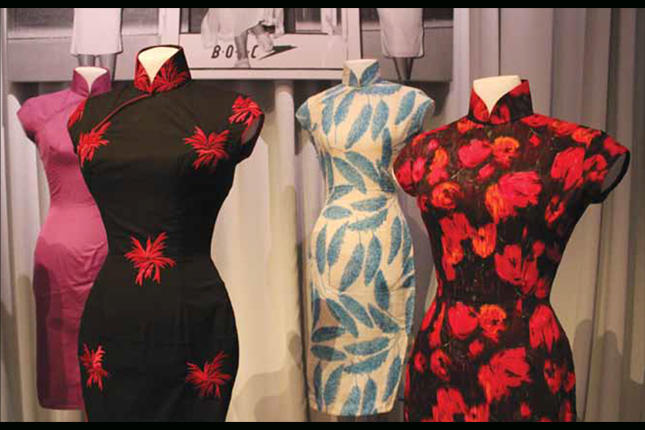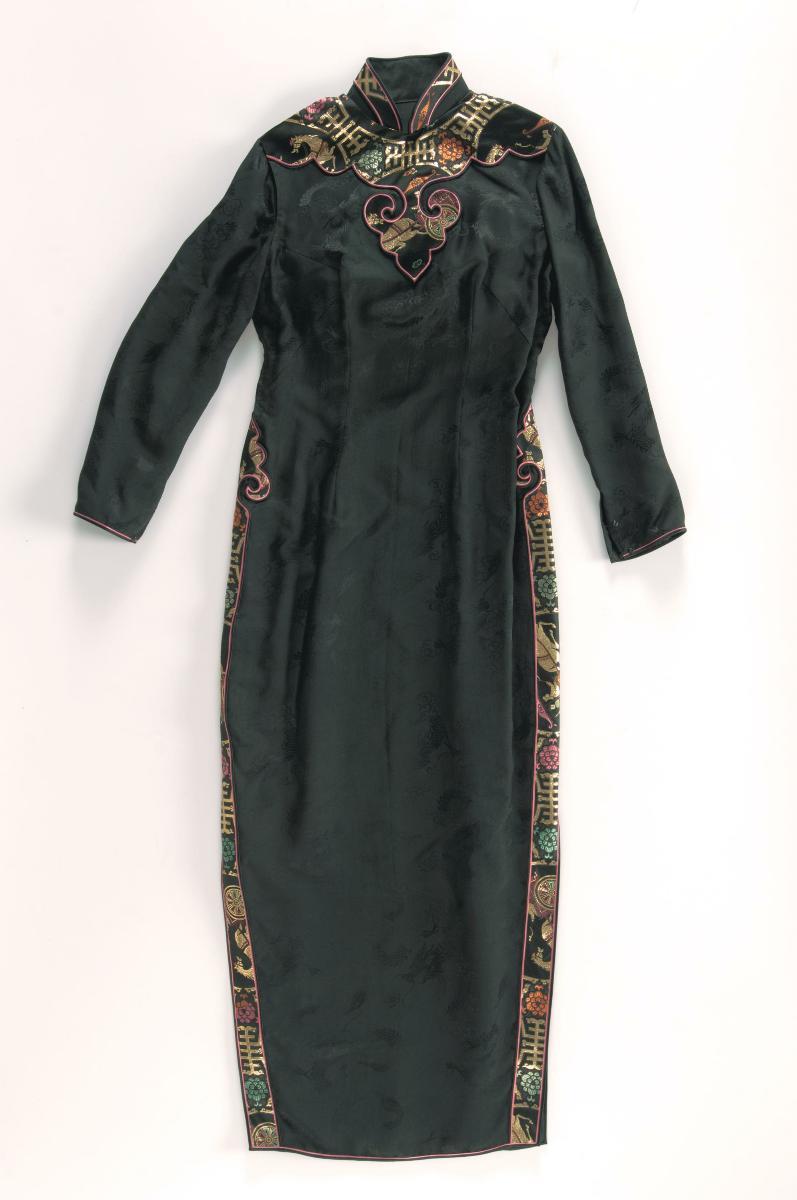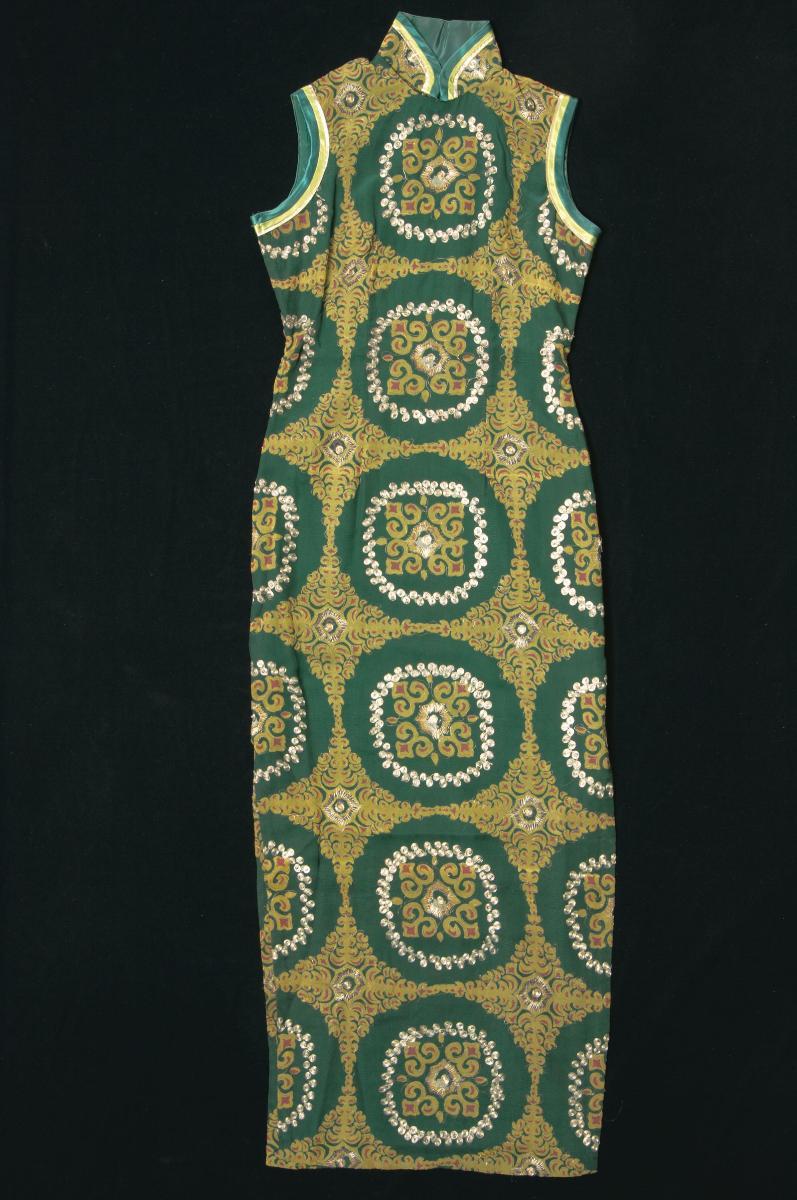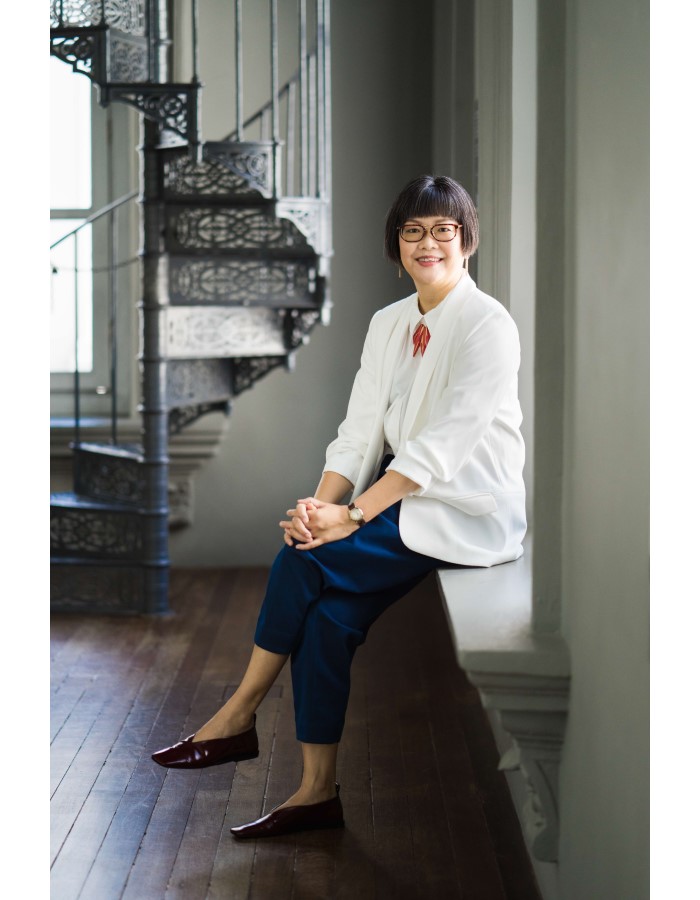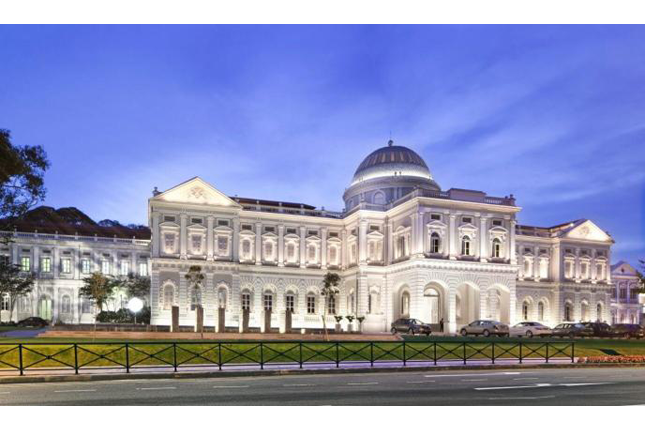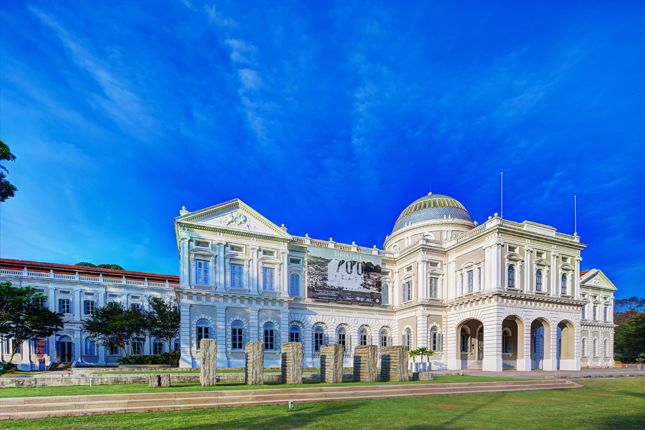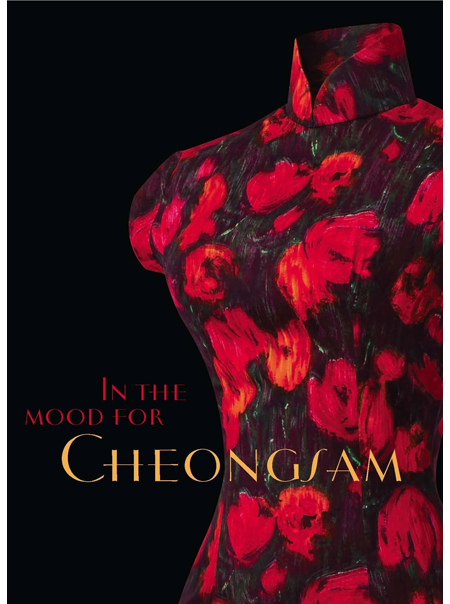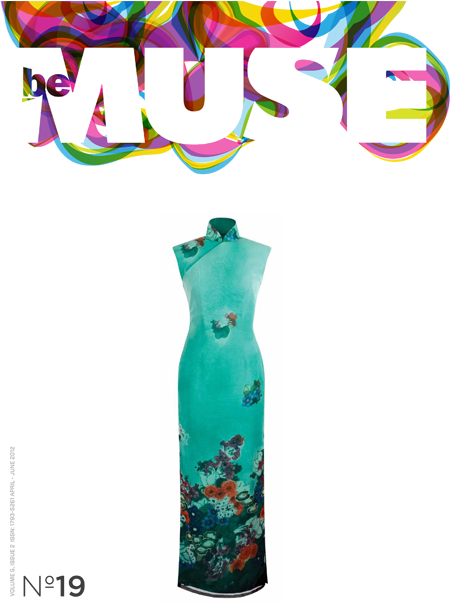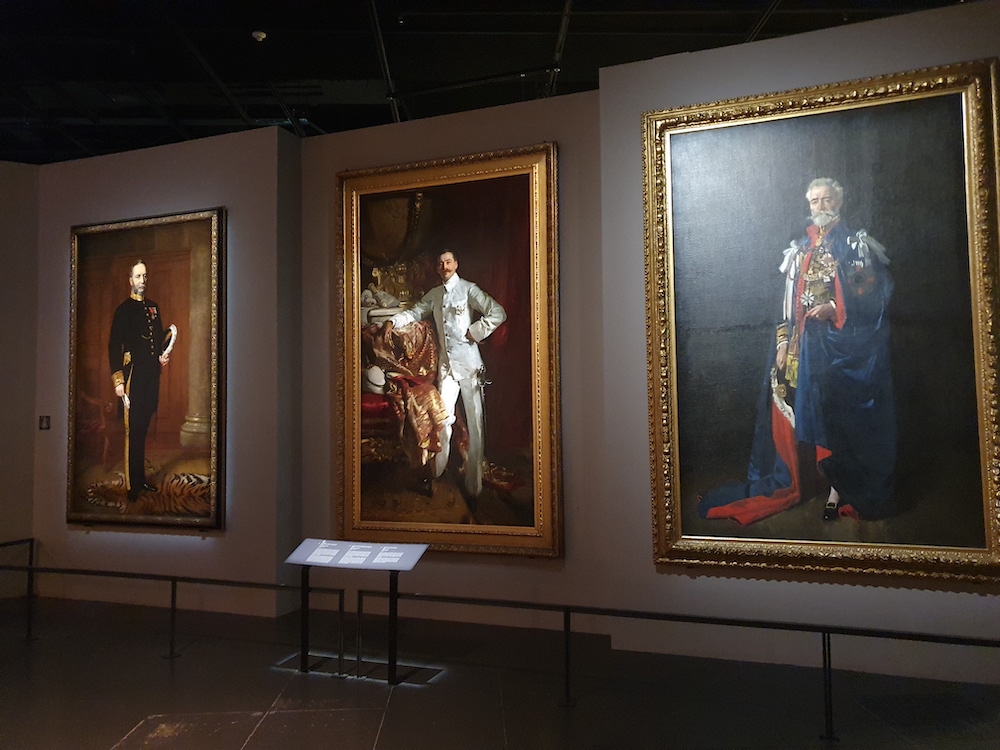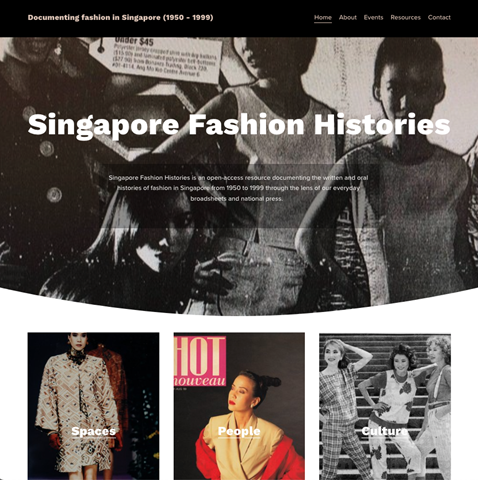Copy by:
Chung May Khuen, Curator, National Museum of Singapore (NMS)
Desirene Ho, Assistant Director, NMS - Marketing & Corporate Communications (MCC)
Soo Ming Jie, Assistant Manager, NMS-MCC
Nicholas Yeo, Assistant Manager, NMS-MCC
Ida Betryl Cecil, Manager, NMS-MCC
Be Muse Volume 5 Issue 2 – Apr to Jun 2012
Chung May Khuen, Curator, National Museum of Singapore (NMS)
Desirene Ho, Assistant Director, NMS - Marketing & Corporate Communications (MCC)
Soo Ming Jie, Assistant Manager, NMS-MCC
Nicholas Yeo, Assistant Manager, NMS-MCC
Ida Betryl Cecil, Manager, NMS-MCC
Be Muse Volume 5 Issue 2 – Apr to Jun 2012
Made popular in Shanghai in the 1920s, the ubiquitous cheongsam no longer invokes an image of an older generation in a bygone era who wore it for practical and functional reasons. Through the years, the cheongsam has evolved together with social, economic and political landscapes. It is now donned throughout the world, from silver screen sirens and female political figures to women from all walks of life.
In a fitting tribute to this iconic dress and how its evolution parallels the changing social roles of Singaporean women, over 150 pieces of cheongsam were put on display at the National Museum of Singapore from 28 March to 27 June 2012. Titled In the Mood for Cheongsam: Modernity and Singapore Women, the exhibition examined the rise of the modified cheongsam in modern Shanghai, its evolution, its introduction in Singapore during the 1920s and fascinating stories of iconic Singapore women who made the cheongsam their outfit of choice through the decades. These women include the wives of Singapore’s former political leaders such as the late Mrs Lee Kuan Yew, the late Mrs Benjamin Sheares, the late Mrs Wee Kim Wee and influential female icons such as Mrs Elizabeth Choy, Datin Aw Cheng Hu and Mrs Christina Loke. The exhibition also featured the late legendary Hong Kong actress Lin Dai's personal cheongsam collection.
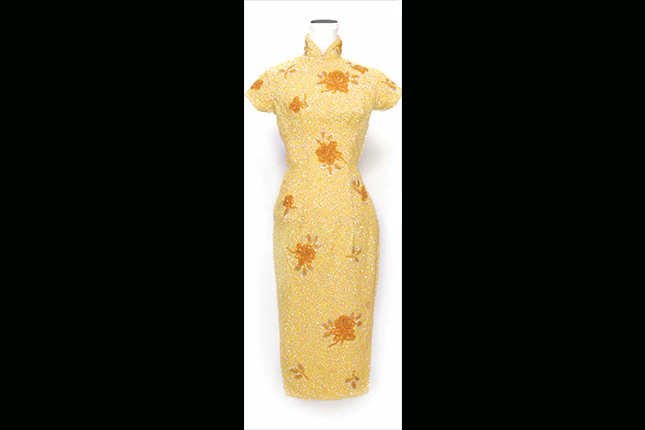
The exhibition was categories into six sections: (1) The Origins of the Modern Cheongsam, 1920s; (2) The Cheongsam in Singapore, 1920 to 1940s; (3) The Golden Period of Cheongsam in Singapore, 1950s to 1960s; (4) Personal Wardrobes; (5) The Power Cheongsam; and (6) Modern Interpretation of Cheongsam.
THE ORIGINS OF THE MODERN CHEONGSAM, 1920s presented the modernised cheongsam as worn by the educated elite. The style in the 1920s signified a period of liberation, with the burgeoning of new ideas and thoughts on the role of women. The cheongsam of the 1920s was loose; the sleeves were wide; and the overall look, simple.
The collar, sleeves, front flap and edges of this garment are embellished with machine-made trimmings, which help to accentuate the form. As the bolt is not wide enough, two pieces of fabric were joined at the centre to make this garment. The tailor had to skilfully match the patterns on both pieces of fabric to ensure that the design is symmetrical. This outfit has no slit on the left side and a press stud at the bottom can be seen if it is opened fully.
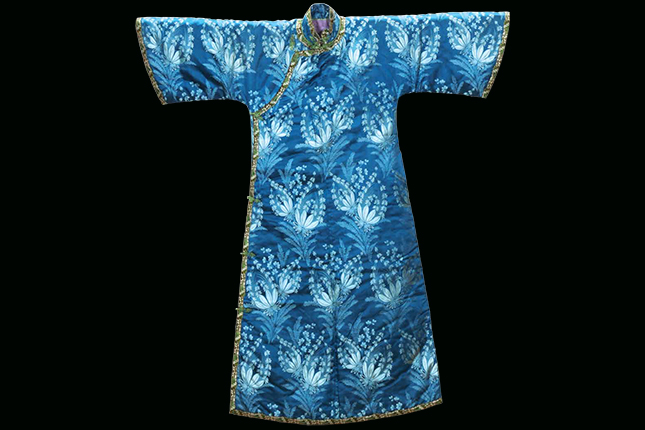
This is an example of a late 1920s cheongsam with long and narrow sleeves made of silk damask with cloud motifs. One side of the cheongsam is secured by simple knotted buttons. Its loose silhouette is similar to the changshan, the long robe worn by men. This cheongsam is one of the oldest pieces in the National Museum of Singapore’s collection.
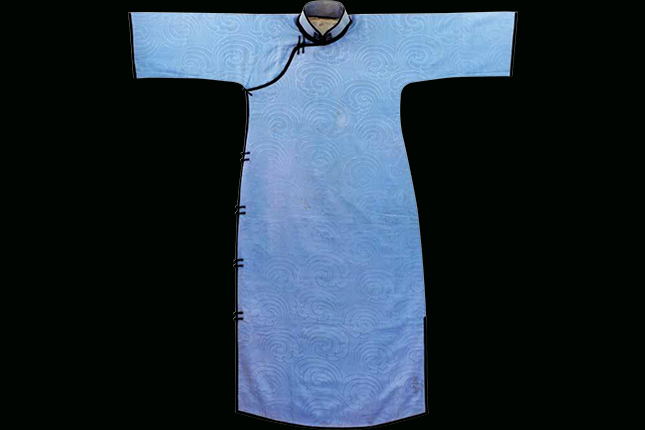
THE CHEONGSAM IN SINGAPORE, 1920 TO 1940s saw a stronger sense of modernisation and the embrace of western fashion concepts such as narrower and shorter sleeves, the use of imported fabrics such as silk crepe, georgette and chiffon, as well as the use of geometric, floral and Art Deco motifs.
In Singapore, the cheongsam, which was associated with modernity, was a popular garb for teachers, wives of wealthy businessmen, young girls, and the Peranakans.
This is a typical example of a 1930s cheongsam, made of fabric printed with geometric patterns from the Art Deco period. The use of such fabrics was extremely popular in Shanghai during the 1930s and reflected the rising influence of Western trends in the cheongsam. The sleeves and body of the cheongsam were made from one piece of fabric. The cut is relatively slender and narrow at the waist compared to the loose-cut cheongsam of the 1920s. The sleeves are not only shorter but also narrower, suggesting the effort to highlight the curves of the female form. There is a slit on the left side, and a full opening on the right. The collar, cuffs, front flap and hem are adorned with piping and binding that complement the colour of the fabric. Blue and white knotted buttons embellish the high collar.
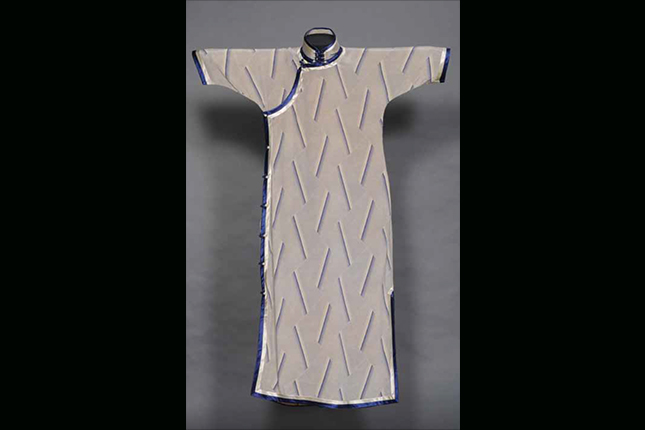
This 1930s cheongsam, made of imported silk crêpe with floral embroidery, was worn by a bride on her wedding day. As the cheongsam is translucent; it is paired with a slip of scalloped edging underneath. The use of lightweight, imported fabrics for cheongsam in Shanghai and Singapore showed a shift in the nature of the garment from traditional to cosmopolitan.
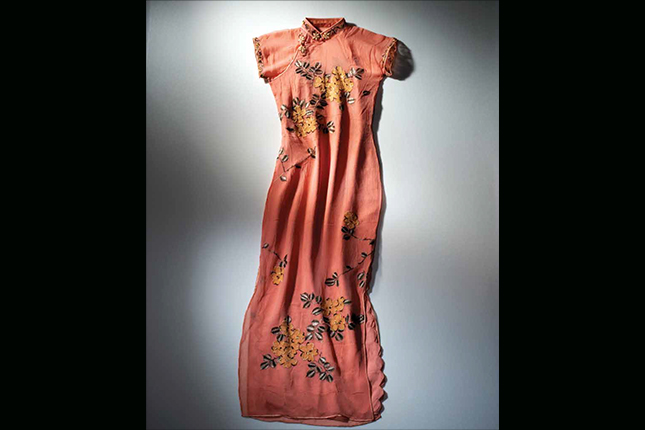
THE GOLDEN PERIOD OF CHEONGSAM IN SINGAPORE, 1950s TO 1960s represented the evolution of the cheongsam to a popular everyday wear for working women, showing a significant shift in the identity of women from the traditional home-maker to the modern working female due to the country’s changing political, economic and social climate after World War Two.
This cheongsam collection features a nipped-in waist which became popular in the West after the Second World War. Darts on the bust and waist of the cheongsam help to take in excess fabric and accentuate the figure of the wearer.




